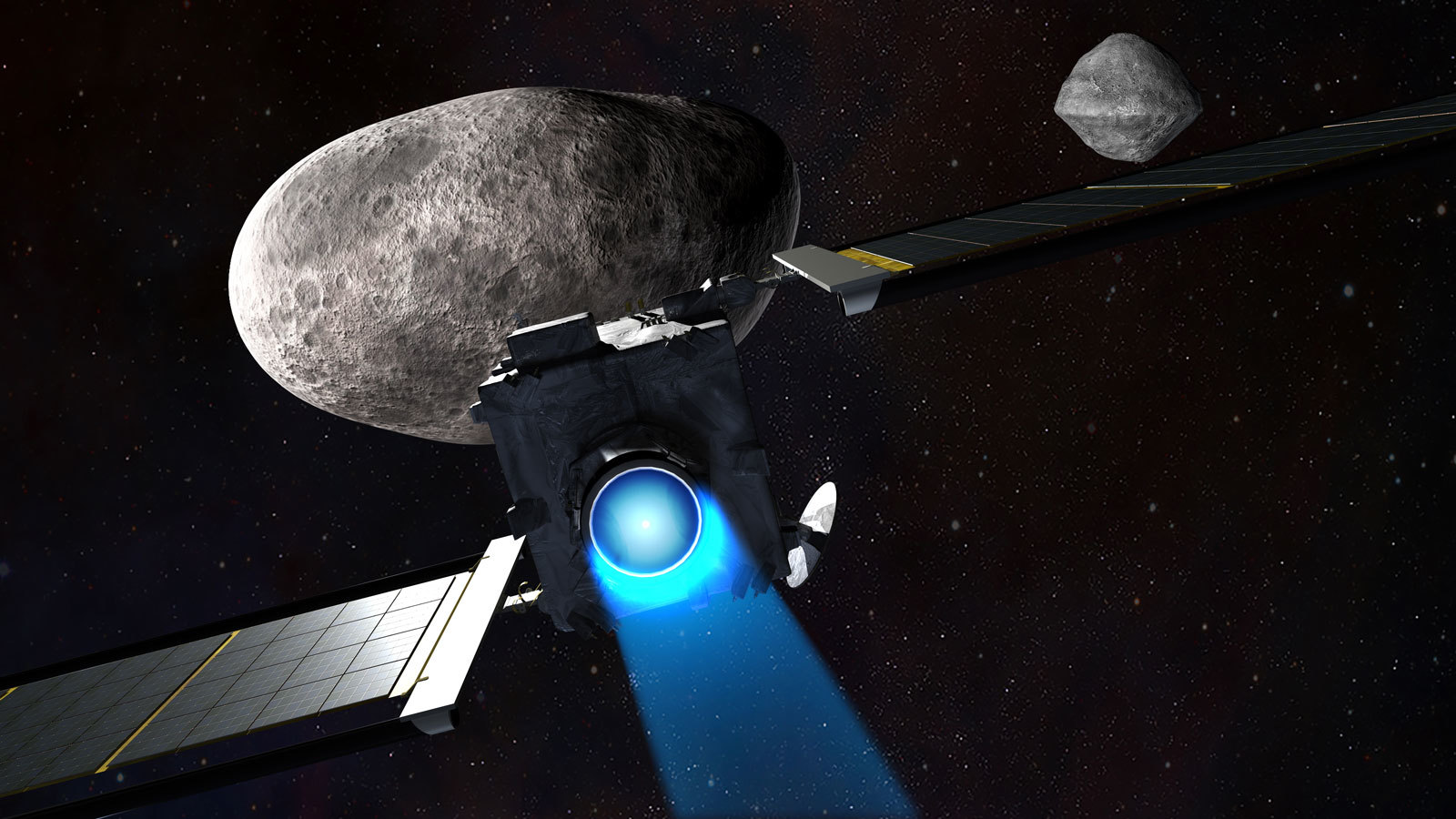Why did NASA pick Didymos for its asteroid-crash mission?
Here's why the space rock drew NASA's eye.

How do you pick one asteroid out of thousands for a space mission?
NASA made that tough choice with its Double Asteroid Redirection Test (DART), which aims to slam a spacecraft into the moonlet Dimorphos on Monday (Sept. 26).
DART aims to alter the orbit of Dimorphos around its parent asteroid, called Didymos, In the first-ever test of the "kinetic impactor" planetary defense technique. To be clear: Scientists have found no asteroid that poses an immediate threat to human civilization. But NASA has emphasized the importance of planning now, to get ready for a scary scenario in the future.
Related: NASA's DART asteroid-impact mission will be a key test of planetary defense
Choosing the right target was essential to getting the science done correctly. NASA and the Johns Hopkins University Applied Physics Laboratory, which are working together on the mission, said there were a few things that made the binary asteroid system ideal for this critical mission.
"The Didymos system is an eclipsing binary, meaning that from our vantage on Earth, Dimorphos regularly passes in front of and behind Didymos as it orbits," JHUAPL officials wrote in a DART fact sheet.
Because the duo are relatively easy to observe from Earth, telescopes on our planet can view any changes in brightness that occur as the moonlet orbits the parent asteroid. Such variations reveal the length of time it takes for Dimorphos to orbit Didymos. Any change to the current situation will indicate that DART managed to alter Dimorphos' orbit, at least a little bit.
Get the Space.com Newsletter
Breaking space news, the latest updates on rocket launches, skywatching events and more!
The test location is also ideal because the two asteroids pose no threat to our planet, mission team members emphasized. Moreover, the Didymos system is only 6.8 million miles (11 million kilometers) from Earth, meaning that spacecraft can get there relatively quickly. Indeed, DART launched just last November; its 10-month journey is quite quick for a space mission.
Related: How big is the asteroid threat, really?
The short distance between our planet and the asteroid system also makes it easier for telescopes of multiple sizes on Earth to conduct what mission team members describe as an "observation campaign to determine the spacecraft's effect" on the asteroid. In other words, a range of professional telescopes may be able to participate, since the target will be relatively bright even in smaller observatories.
If DART succeeds, the spacecraft should shorten Dimorphos' orbital period "by several minutes," officials stated, but it will take weeks for telescopes to confirm that. A follow-up mission, the European Space Agency's Hera, will fly by the system later in the 2020s to view any crater up close and to make other measurements.
Editor's note: This story has been updated to correct the date of impact and the name of JHU APL. Follow Elizabeth Howell on Twitter @howellspace. Follow us on Twitter @Spacedotcom or Facebook.
Join our Space Forums to keep talking space on the latest missions, night sky and more! And if you have a news tip, correction or comment, let us know at: community@space.com.

Elizabeth Howell (she/her), Ph.D., was a staff writer in the spaceflight channel between 2022 and 2024 specializing in Canadian space news. She was contributing writer for Space.com for 10 years from 2012 to 2024. Elizabeth's reporting includes multiple exclusives with the White House, leading world coverage about a lost-and-found space tomato on the International Space Station, witnessing five human spaceflight launches on two continents, flying parabolic, working inside a spacesuit, and participating in a simulated Mars mission. Her latest book, "Why Am I Taller?" (ECW Press, 2022) is co-written with astronaut Dave Williams.
